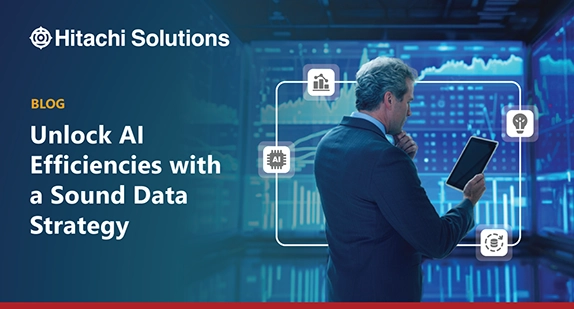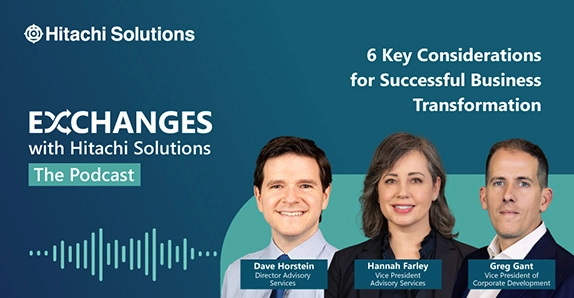

A sound data strategy— how data is collected, stored, managed, and analyzed to achieve business goals — is the foundation for any successful AI-driven project, because the real magic and value from AI technology happens when it begins with your own data. Every company has different data sources, needs and objectives, but the common element is that before a star technology like AI can deliver value, you need to set the stage for success.
In fact, a recent survey showed that 35 percent of technology decision makers said data will be their leading activity in 2024, followed by 32 percent who will be prioritizing infrastructure modernization, according to Forrester’s Business And Technology Services Survey, 2023. This snapshot shows that while organizations are adopting the latest trends, they’re also prioritizing the necessary groundwork to implement them.
Every AI Strategy Begins with Data
Just about every technology conversation today includes generative AI. It’s important to remember that the bedrock of generative AI is data, and the effectiveness of any genAI effort rests on the accuracy of, and accessibility to, the data that the AI models will be trained on.
Models cannot produce the right outputs without high-quality data. Improving data quality allows machine learning models to accurately identify underlying patterns, thereby improving predictions. When organizations prioritize data quality through rigorous metrics, assessments, continuous monitoring, and improvement, they not only enhance model reliability but also reduce the risk of biased or erroneous conclusions. This improvement in model accuracy translates into cost savings, improved business outcomes, and a competitive advantage.
Trusting Your Data to Work for You
A system with inaccurate, misleading, or partial data will lead to a failed implementation, so it’s critical to ensure your data is pristine and trustworthy. Data quality is the responsibility of everybody in an organization. At Hitachi Solutions, we see many customers who overestimate the quality of their data and underestimate the effort it takes to get it into shape.
Ask yourself:
- What data do I have?
- Where is it?
- Is it accurate?
- Can people access the data needed to make the right decisions?
- Is it secure?
If you answer ‘no’ or ‘not sure’ to any of those questions, it’s likely others in your organization are answering the same. In fact, only one in six managers actually trust the data they use every day, according to a Harvard Business Services Review.
A Complete Data Platform
Modernizing your data platform is the right place to start. A complete cloud-based data and analytics platform unifies your data, all of it, transforming and optimizing it into a more accessible, usable, and valuable form. It’s critical for organizations that want to take full advantage of their data assets and provides the foundation for core applications to use advanced analytics and business intelligence.
Modernized data platforms also give people access to the insights they need, regardless of where the data sits, and provide all the needed technical plumbing— data acquisition, cataloging, lineage, and security. Only a complete platform toolset can deliver trusted data and provide transparent views into the movement of data across the entire data estate.
Many data platform providers have shifted to modernized, lake house architectures that automate data ingestion, data loading, query optimization, resilience, data protection, and access. These architectures are “open format” meaning that the data in them can be accessed and processed by a variety of tools and systems. It helps meet the challenges of handling large, varied data types and formats in a way that is both scalable and efficient and caters to the growing complexity and volume of data in every industry.
Having a platform that provides the proper data governance, data integration, data security, and data quality are not just best practices; they are necessary for business success, and they lay the foundation so you can start tapping into data, apply AI, and begin to transform your operations.
Integrating Disparate Data
GenAI is most effective when it has both structured and unstructured, internal and external data to process. As usage of generative AI increases and companies roll out more conversational experiences for customers and employees, the amount of unstructured data managed by enterprises will double in 2024, according to Forrester. In order to scale, organizations need to double down on their infrastructure, with all-in-one unified data platforms such as lakehouses to manage costs, support multi-structured data analytics, and enable broader use cases and workloads.
In 2024, companies will focus on data platform development to maximize the value of their internal and external data, which includes feeding new AI and analytic workloads, internal and external LLMs, and improving data delivery speed to the business with strong data governance, quality and lineage.
Tech Target
A robust data platform like Microsoft Fabric brings together data and analytics tools, including AI capabilities, into a single unified product. It’s a much-needed solution in the data platform space when it’s not practical or cost-effective to deploy multiple disparate tools for secure cloud applications.
With Fabric, you can do some really amazing things: for example, manufacturing organizations are using it to unify operational data (like factory sensor information) and ERP data (like inventory levels). It’s a true unified data foundation and can facilitate advanced analysis. It also breaks down long-standing data silos and enables a more collaborative, cohesive work environment.
You can learn more here about Fabric and how Hitachi Solutions is using it in our Hitachi Solutions Empower Data Platform to bring companies a data solution at a lower cost entry point in very little time. Empower is built using state-of-the-art lakehouse architecture, so organizations can take advantage of all types of data, both structured and unstructured.
Why Do So Many Data Initiatives Fail?
Initiatives sometimes fail, not because the technology isn’t right, but because organizations don’t foster a culture where employees are encouraged and are accountable for using data in their decision-making processes, and are provided with the necessary training and resources to do so.
Data modernization programs don’t just float in the realm of IT departments but are tightly integrated with an organization’s talent, resources, and processes. If the people aren’t on board and understand the expectations around how they’re supposed to work with data and pull that data for decision-making analysis, issues will almost certainly arise.
“Where we see our customers often underinvested, is the people side of this roadmap. People, talent, and business units all must be bought into the strategy,” said Greg Gant, Hitachi Solutions Advisory Services Vice President.
With Advisory Services, we help customers define, prioritize, and realize value from every modernization initiative.

Listen to our podcast for tips on how to ensure your data modernization initiatives can be successful for all stakeholders in your organization.
Listen NowHow to Get Started
Having the right data means you can start leveraging ML and AI today to predict what your customers need tomorrow. But there is no one-size-fits-all solution. Because every organization is unique, it is important to start by asking the right questions early on. Data quality, infrastructure, operational procedures, and change management are just a few factors that will determine success.

Check out our AI Readiness Roadmap offer where we evaluate your existing estate, devise an incremental plan, and execute the move to optimize all services and data points. And we do this using best practices to ensure ideal levels of security, resiliency, and access control.
Listen NowFrom a fully managed modern data platform to a 100 percent in-house data architecture, Hitachi Solutions meets you where you are to get you where you need to be for your entire analytics estate. You can read more about how we’re helping our customers modernize their data estates with made-to-order solutions here.


